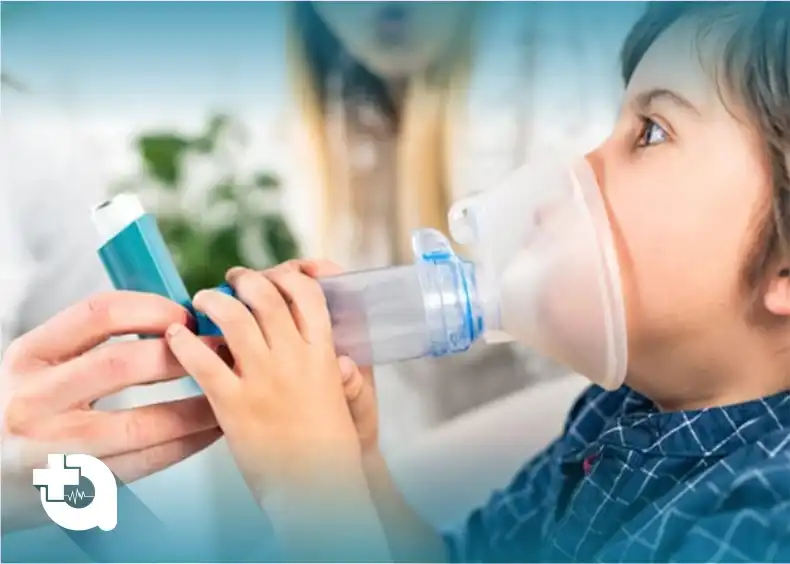Paediatric Pulmonology
Specialty > Subspecialty > Paediatric Pulmonology


Paediatric pulmonology treatments are complex and require expert supervision. Owing to the criticality involved, it is important to have experts that are highly experienced and capable of performing the surgery with complete precision.
The Department of Paediatrics at Aayush Hospitals provides comprehensive paediatric care, including diagnostic tests and treatments. With advanced facilities for paediatric medicine and surgery, our hospital can perform complete diagnosis and treatment of various paediatric conditions.
Our team includes paediatricians, doctors, and nurses with years of expertise in the field. Moreover, our team provides a multidisciplinary approach to create customized and patient-centric treatment plan.
Equipped with state-of-the-art infrastructure, Aayush Hospitals is one of the best hospitals in Gujarat for paediatrics.

Bronchopulmonary dysplasia or BPD is a chronic condition affecting preterm newborns or those who have underdeveloped lungs. The condition occurs when the lungs and airways are damaged after long-term oxygen or mechanical ventilation is used to help them breathe.
What Are the Symptoms of BPD?
The common symptoms of BPD include:
Low oxygen levels in the blood.
Difficulty breathing.
The blue colour of lips and skin.
Rapid breathing.
Pauses in breathing.
How is BPD Treated?
Since BPD is caused by mechanical ventilation, BPD treatment aims to reduce the use of supplemental oxygen at the earliest. The treatment focuses on enabling your baby to breathe on its own. It includes:
Increasing calories to improve your baby’s nutrition and help their lungs grow.
Limiting fluids to reduce the amount of fluid in the lungs.
Weaning your baby from oxygen.
Surgically inserting a tube into your baby’s windpipe to help them breathe.
Medicines to prevent infection.
Asthma is a chronic lung disease that affects your airways. Airways refer to tubes that carry air in and out of your lungs. In the case of asthma, you are unable to get air inside the lungs due to swelling or narrowing of airways.
Asthma can start at any age but it often starts during childhood when the immune system is compromised and is still developing. A lot of children have their first asthma symptom by the age of 5 years.
Why Are More Children Getting AStham?
Children are more prone to asthma due to;
Exposure to allergens including dust, and smoke.
Not enough exposure to childhood illness and development of the immune system.
Lower rate of breastfeeding.
What Are the Symptoms of Asthma in Children?
The symptoms of asthma may vary for every child. In general, the symptoms may include:
Frequent coughing.
Less energy to play.
Rapid breathing or shortness of breath.
Wheezing sound while breathing.
Retractions when your child tries to exhale.
Constant weakness and irritability.
Trouble feeding.
When your child gets an asthma attack, these symptoms may worsen quickly and turn into a life-threatening situation. In such cases, your child needs medical help urgently. The symptoms include:
Severe coughing.
Rapid shortness of breath.
Severe breathing problems.
Increase in respiratory rate at rest.
Turning pale or bluish on the face, lips, and fingernails.
Trouble speaking.
How is Childhood Asthma Treated?
Childhood asthma includes a “management plan” to take care of your child’s symptoms. The plan includes:
When and how your child should use asthma medication.
What to do when the asthma gets worse.
When to seek emergency help.
Make sure that you understand this plan with your paediatrician first and let your child also understand the importance of it.
Medications:
Your paediatrician will prescribe certain medications such as inhalations to control asthma symptoms. Make sure that you always keep the inhaler of your child with them. Show your child how to use one and which medicines to take when things get worse.
What Are the Risks of Asthma Treatment?
Some children may not show any complications to asthma treatment while others may show potential side effects, including:
Oral thrush.
Rash or swelling.
Increased heart rate.
Nervousness.
Headache.
Weight gain.
Children can develop allergies at any age. The sooner you recognize these symptoms, the better diagnosis and treatment.
Which Are the Common Allergic Symptoms in Children?
If your child has an allergy, he may show the following symptoms:
Trouble breathing.
Skin rashes.
Coughing.
Sneezing, runny nose, and congestion.
Itchy eyes.
Upset stomach.
When Should You Go For an Allergy Test?
Allergies are common in children, however, if the symptoms begin to interfere with their sleep, school, diet, and health, make sure to visit a paediatrician at the earliest.
Which Are the Allergy Tests?
Your child’s allergy test will include:
Skin Prick Test:
During this test, a small drop of allergen will placed on your child’s skin and pricked with a needle. If your child has an allergy to the substance, a reddish swollen bump will appear.
Intradermal Test:
During this test, the doctor will inject a small amount of allergen into your child’s arm. If your child is allergic, a reaction will occur.
Blood Test:
Your doctor may also conduct multiple blood tests to measure the amount of antibodies in the blood.
Patch Test:
This test is similar to the skin prick test. During this, allergens will be placed on patches and put on the skin. This will be allowed to be worn for 48 hours.
Food Challenge Test:
To diagnose a food allergy, your doctor will give an increased amount of a food item and monitor closely for any reaction.